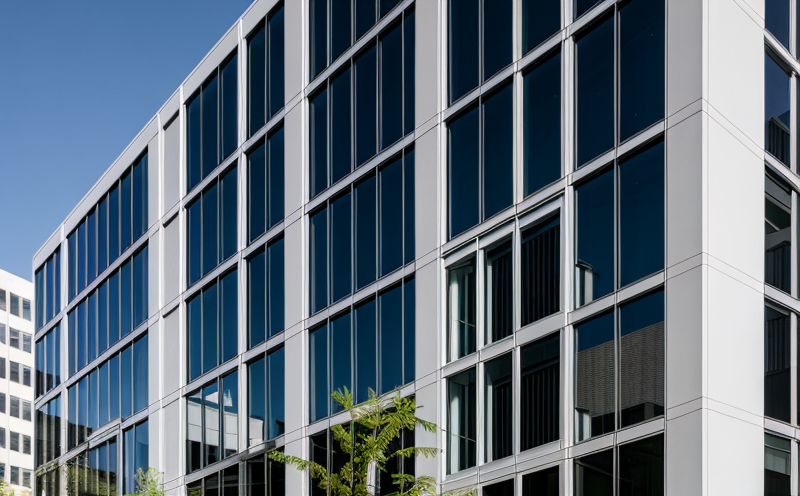ISO 10545 Mechanical Properties of Ceramic Materials
The ISO 10545 series specifies methods for determining the mechanical properties of ceramic materials under various loading conditions. This suite of standards is crucial in ensuring that ceramic components meet specific performance requirements, especially in sectors like building and infrastructure where durability and reliability are paramount.
In the context of Building & Infrastructure Testing, particularly focusing on Glass, Ceramic & Façade Testing, ISO 10545 provides a robust framework to evaluate mechanical integrity. This is essential for materials that undergo significant stress during construction or in use, such as ceramic tiles, façade panels, and insulating ceramics.
Understanding the mechanical properties of these materials helps prevent structural failures, ensuring safety and longevity. The tests outlined in ISO 10545 can assess strength, stiffness, and fracture behavior under compression, tension, and shear conditions. Specimens are typically prepared by cutting from larger ceramic plates or bricks, ensuring that they represent typical material characteristics.
The process of testing involves precise instrumentation to apply controlled loads to the specimens in a laboratory setting. Common equipment includes universal testing machines (UTMs) capable of applying tensile and compressive forces with high accuracy. The tests are conducted at room temperature or specific elevated temperatures if required by the project specifications.
The results from these mechanical property tests provide critical data for quality assurance, product development, and regulatory compliance. Engineers can use this information to optimize material selection and improve design processes. Compliance officers ensure that materials meet international standards like ISO 10545, which are recognized globally in the ceramics industry.
For R&D engineers, these tests offer valuable insights into how different factors affect ceramic performance. From raw material composition to manufacturing techniques, understanding mechanical properties helps refine processes and innovate new products. Procurement teams rely on ISO 10545 data when sourcing materials from suppliers, ensuring consistent quality across projects.
By adhering to these standards, laboratories can offer reliable testing services that meet industry expectations. This not only enhances the reputation of the testing facility but also contributes significantly to the overall quality and safety of building and infrastructure projects.
Why It Matters
The mechanical properties tested under ISO 10545 are critical for several reasons:
- Safety Assurance: Ensures that ceramic materials used in high-stress applications do not fail, thereby protecting users and structures.
- Performance Optimization: Helps designers select the most appropriate material based on its mechanical characteristics for specific projects.
- Regulatory Compliance: Meets international standards ensuring that products are safe for use in diverse environments.
- Economic Benefits: Reduces waste and rework by selecting materials with the right properties upfront, minimizing costs throughout the project lifecycle.
Applied Standards
The ISO 10545 series includes several parts that cover different aspects of mechanical testing:
- ISO 10545-1: Tensile Testing: This part specifies the procedure for tensile testing of ceramic materials. It is particularly useful in assessing how a material behaves under axial tension.
- ISO 10545-2: Compressive Strength: Defines methods to determine compressive strength, crucial for evaluating materials' ability to withstand pressure without failure.
- ISO 10545-3: Flexural Testing: Provides instructions on how to perform flexural tests which measure the bending resistance of ceramic materials.
These standards are widely recognized and used in industries that rely heavily on ceramics, including construction, aerospace, and electronics. By following these guidelines, laboratories ensure consistent and accurate results across different testing scenarios.
Environmental and Sustainability Contributions
- Eco-Friendly Materials: Testing mechanical properties ensures that ceramic materials are chosen for their durability and resistance to environmental factors, promoting sustainable building practices.
- Energy Efficiency: By selecting the right ceramics through mechanical testing, architects can design buildings with better thermal insulation, reducing energy consumption over time.
- Resource Optimization: Ensuring that materials meet ISO 10545 standards helps in minimizing waste and optimizing resource usage during manufacturing processes.
The use of ceramic materials in construction can lead to reduced carbon footprints, as they are non-combustible and require less maintenance compared to other building materials. This contributes significantly to the environmental sustainability goals set by many organizations today.





